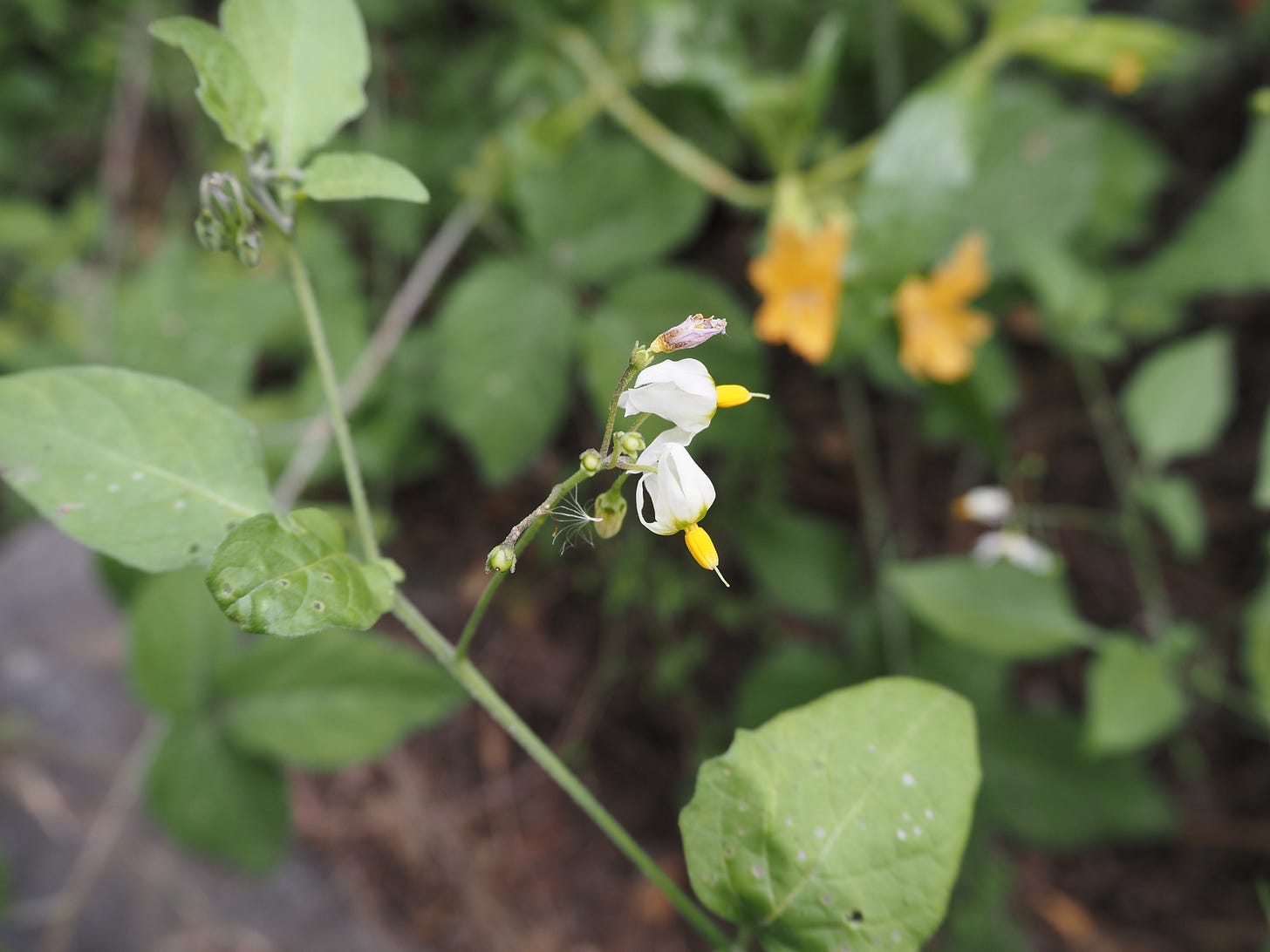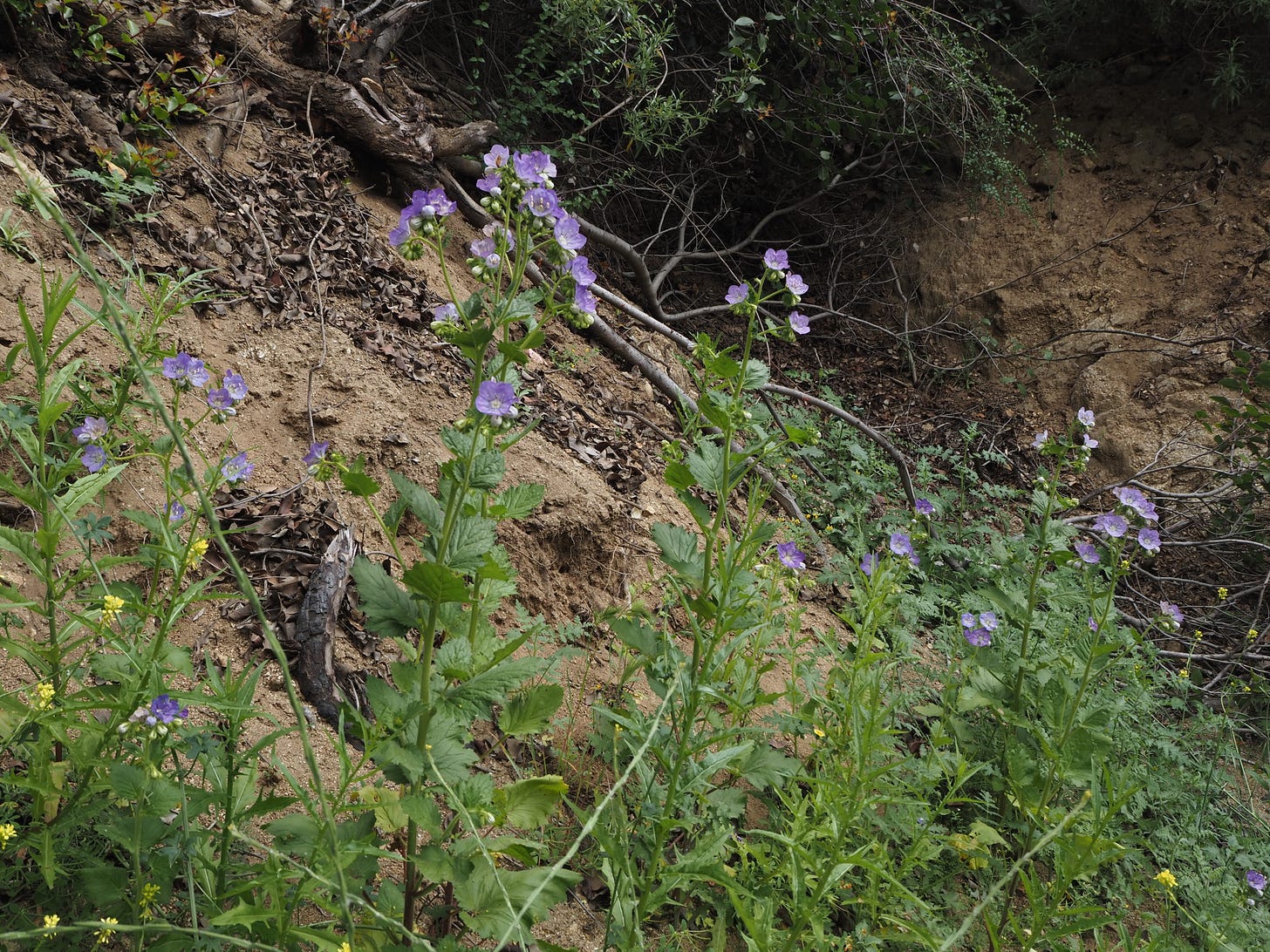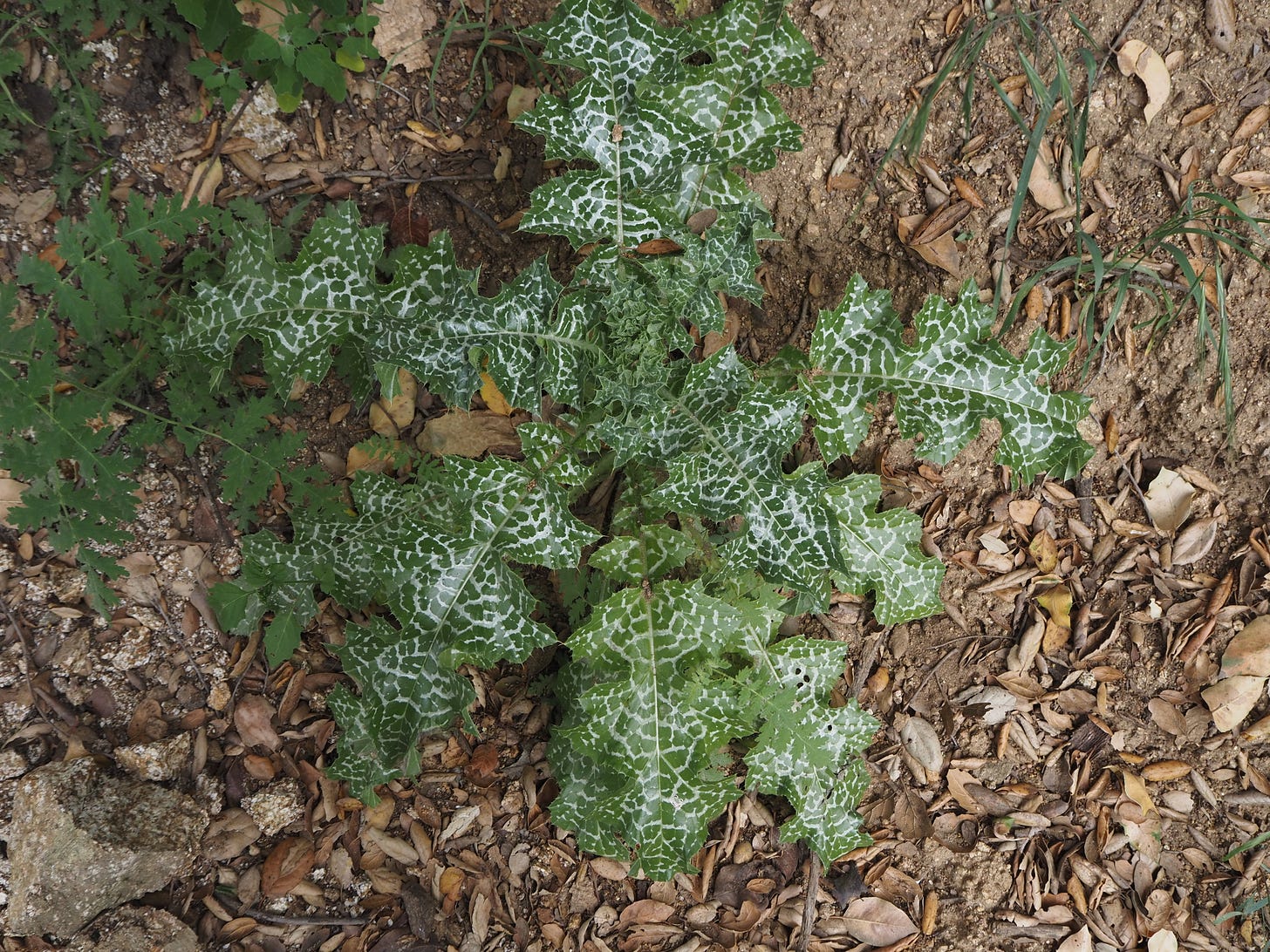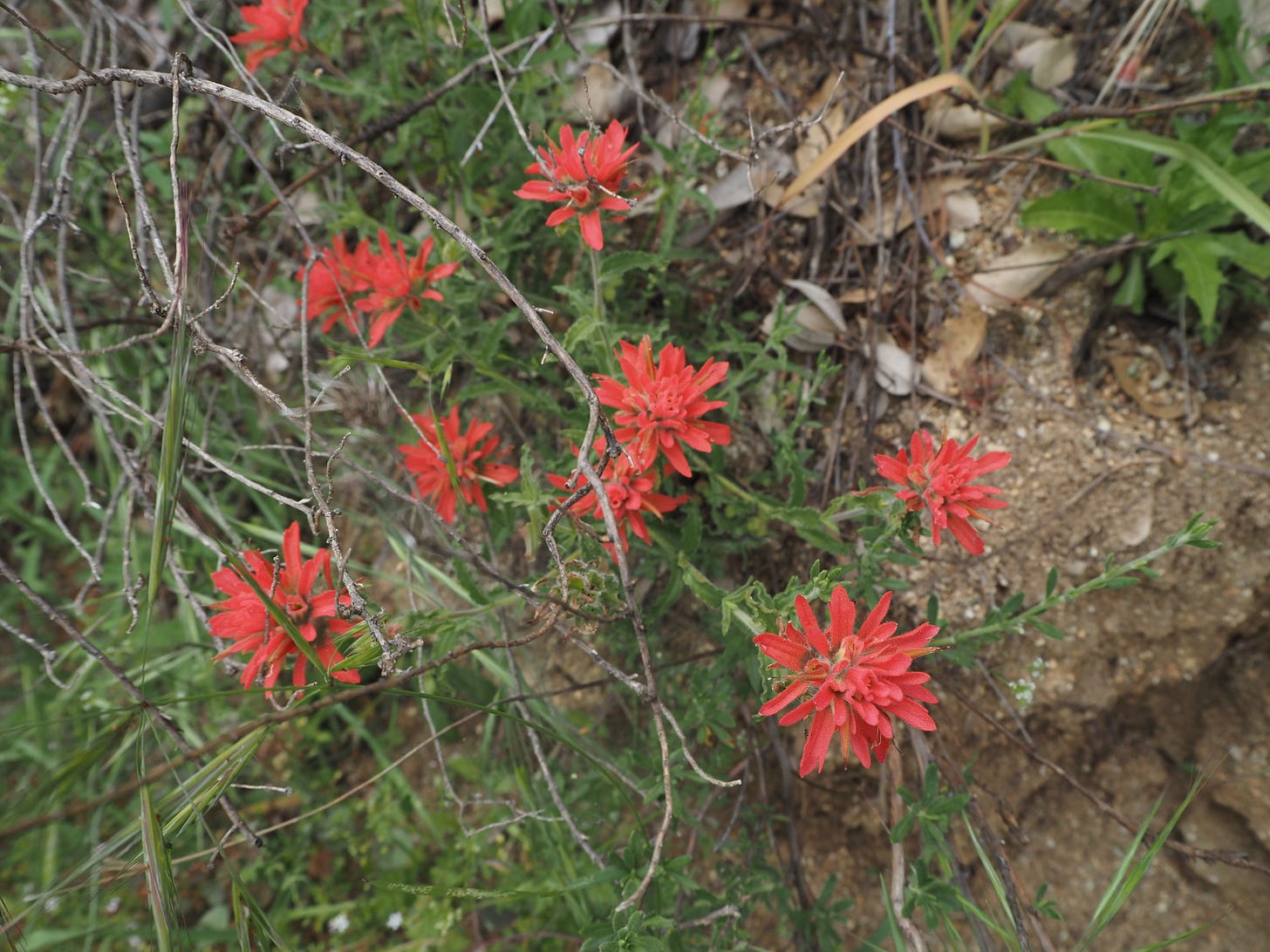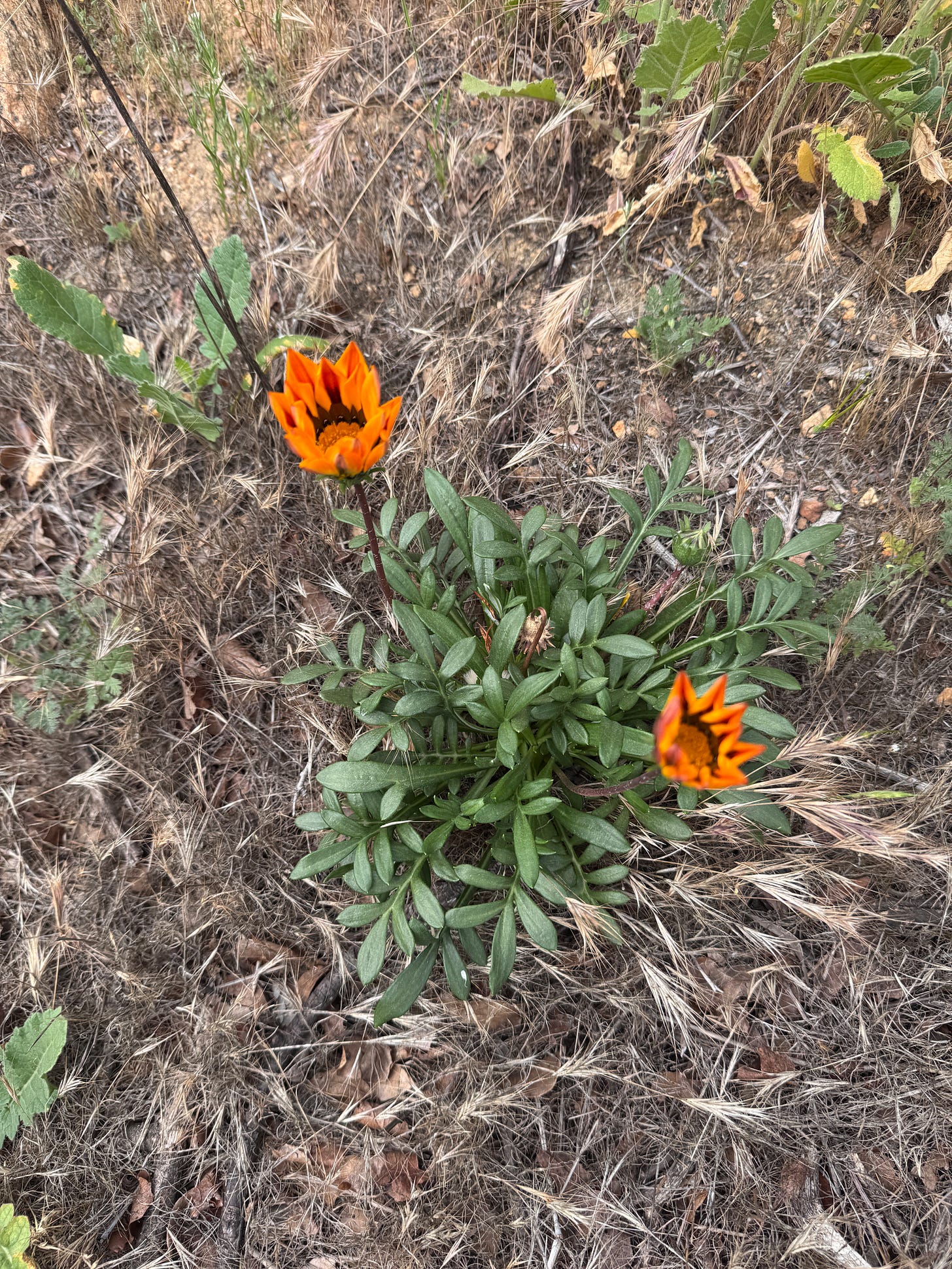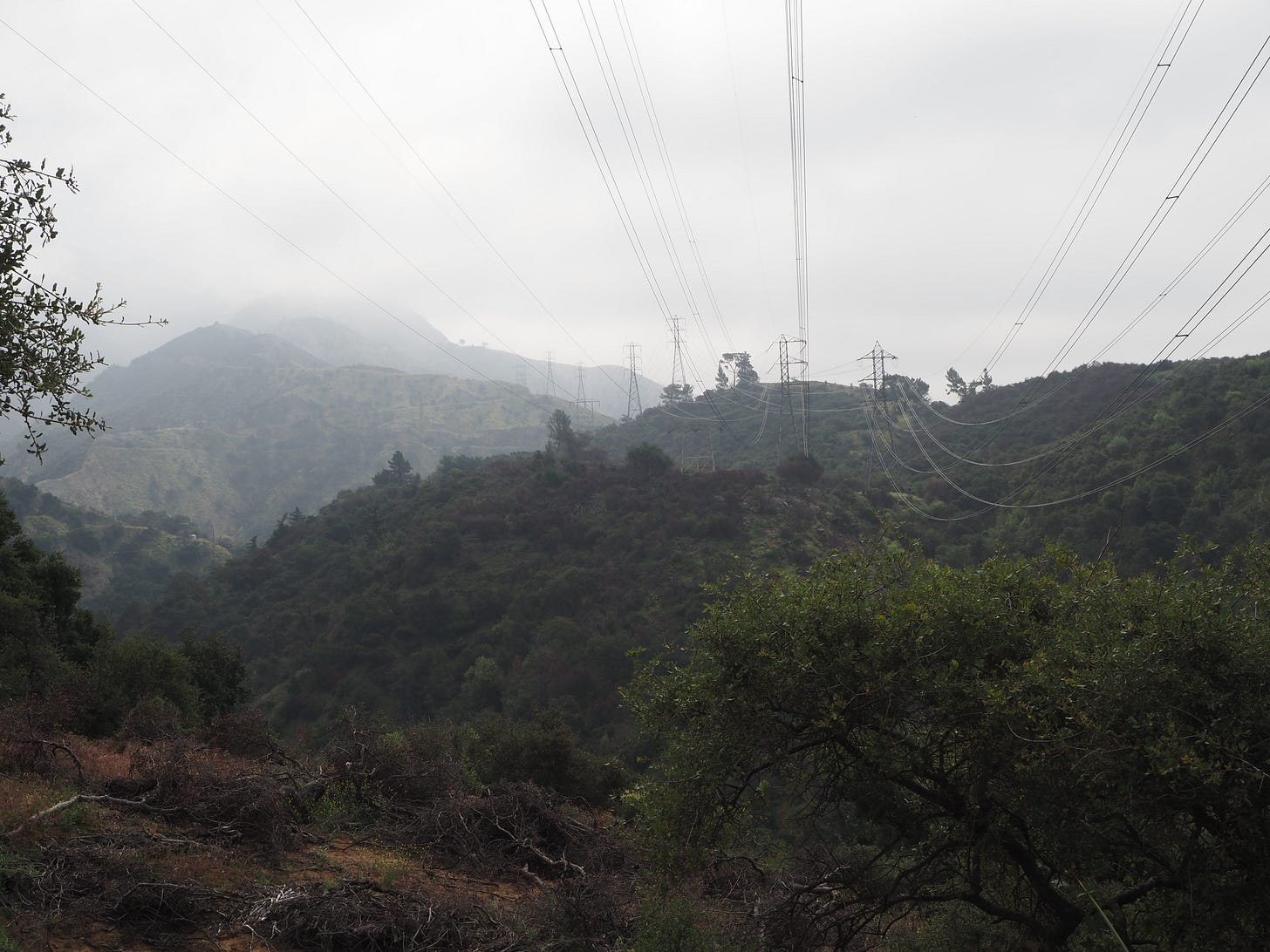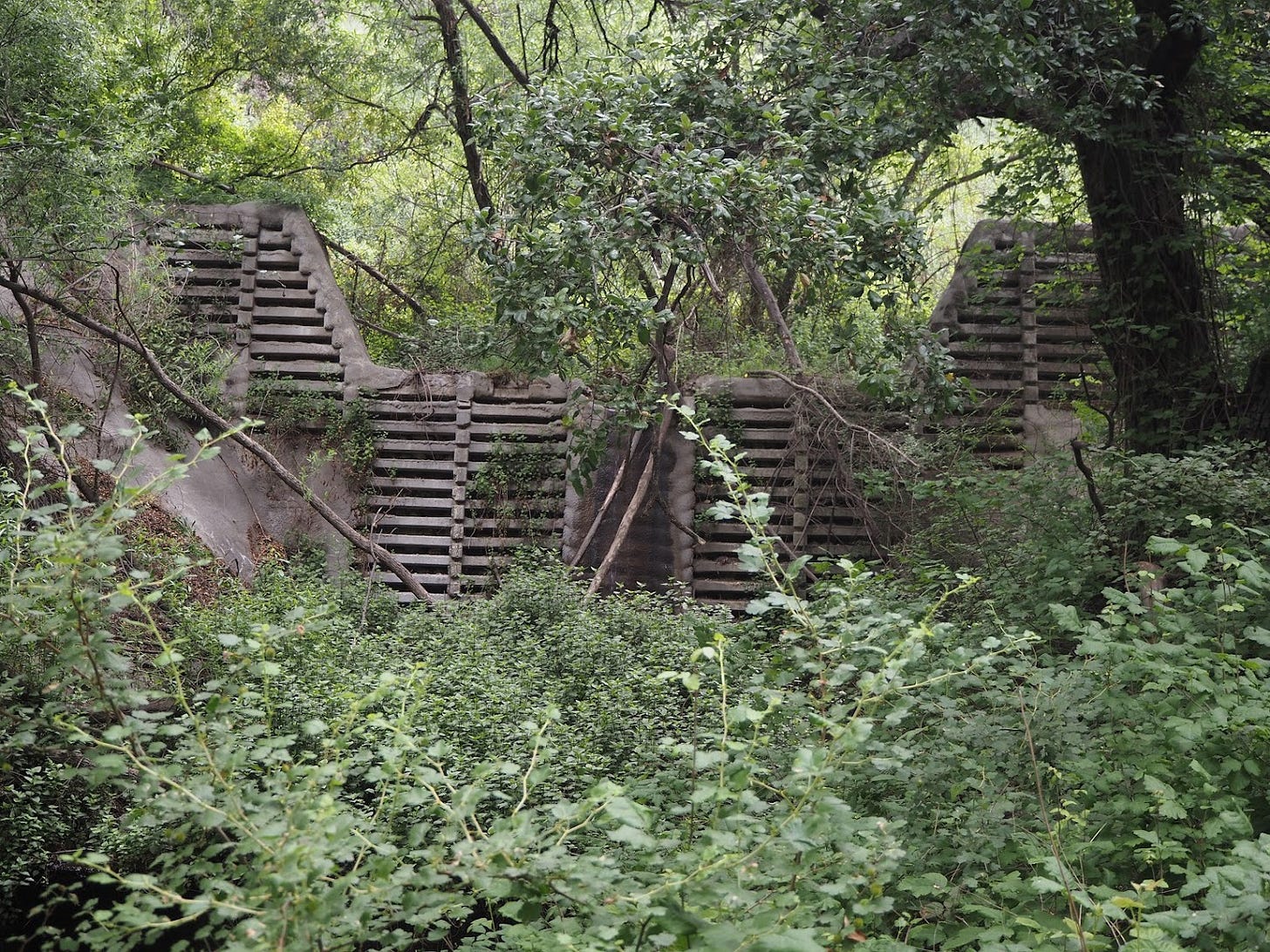What is this mystery plant along a mountain biking trail?
...and other plant identifications from a morning hike near Altadena
A few weeks ago, I drove to a trail called the “El Prieto Loop” in the Angeles National Forest, just north of Altadena. It was my first time driving through Altadena since the fires. A lot of cleanup has been completed, but not much has been rebuilt, so there are blocks that are entirely empty of structures save one or two standing homes. Driving through the neighborhood reminded me less of a disaster zone and more of desolate blocks of my hometown, Memphis, where the city razed abandoned properties in an attempt to decrease crime.
The trailhead for the hike began between two houses in a neighboring suburb. Mid-morning on a weekday it was just me and the gardeners/housekeepers parked on the street.
The loop followed a stream through a valley and worked its way up to a ridge line bordering the still-shuttered area of the National Forest.
I brought my digital camera and took lots of photos of plants. Here are my best attempts at identification:
Notch-leaf scorpion weed or Phacelia crenulata (variation multiflora) — Wikipedia says this stuff causes contact dermatitis. Oh no!
This plant is called Mexican Devil and it is a noxious weed that has caused agricultural loss in Southern China and is toxic to horses. On the upside, it produces pretty white flowers in late summer.
Italian Thistle is also a noxious weed. Sad! In Australia, they get rid of it by letting goats and sheep eat it.
This is another Phacelia — Caterpillar Phacelia — so named because the stems unfurl like caterpillars.
The common name for this is Wild Canterbury Bells or California Bluebell, and it is yet another kind of Phacelia. These grow well in recently burned areas.
I think this is wild alfalfa (though it could also maybe be Birdsfood Trefoil?) A bit hard to tell without flowers. Alfalfa makes a great cover crop because it fixes nitrogen in soil, and is eaten by lots of animals including humans, who eat the sprouts. Pollinators also love the flowers — alfalfa honey is the main honey variety in the USA.
Bonus: Here are some more fantastic facts about Alfalfa.
California Mugwort! Used to induce abortions and vivid dreams.
American Black Nightshade: This plant produces small black berries that despite being slightly toxic are cooked and eaten around the world. There are different strains, and the green fruit is more poisonous than the (ripe) black fruit, Poisonous plant experts advise: "...unless you are certain that the berries are from an edible strain, leave them alone."
I saw several of these mystery plants, which were marked along the trail with little red flags. I’m not totally certain but I suspect that they are Humboldt’s Lily, which produce gorgeous orange and brown flowers that bloom in June (picture of the plant in bloom below). It could be a different kind of lily, as well.
Another Phalacia - this one is “large flowered phalacia.”
Milk Thistle - toxic to cattle; potentially medicinal to humans? More recognizable when it has its purple flowers.
This is some variety of Indian Paintbrush, which also grew in The Adirondacks in the summer.
This is a kind of Phlox, which is not an especially pretty name for a flower. Perhaps it is Carpet Phlox?
Cardinal Catchfly! Grows from a taproot. Glandular and sticky.
Not sure what this African Daisy was doing in Altadena, but <3
A few more photos from the hike:














